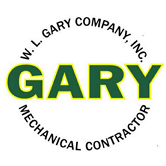What is Backflow?
Backflow is the movement of used or non-potable water back into a clean or potable water system rather than its normal flow. Since in water systems water is intended to flow in a certain direction, usually from the source in the street to the fixture or appliance in your building, the reverse flow of non-potable water into a potable water source can be dangerous. Backflow is caused by the increase of pressure on the building side or at the “point of use” which results in the flow of water back toward the source. Backflow is avoided if you have no cross connections between potable and non potable water systems.
Cross Connections
Cross connections between potable and non-potable water supplies occur anytime the domestic potable water supply is connected to any device that contains stagnant, contaminated, or treated water, such as makeup water to your building’s heating or cooling equipment. If “backflow” occurs in any of these situations, they are hazardous to the occupants of your building including you!
There are a couple of methods to prevent backflow. Cross connections should be avoided whenever possible by the use of a natural air gap. An example of the most common “natural” air gap is the distance between the outlet of your faucet and the flood level rim (top) of your sink. Sewage backing up in the sink will “flood” over the rim before it reaches the water supply. However, when a natural air gap is not possible, the use of a mechanical backflow preventer is necessary to mitigate the hazard caused when backflow occurs at this cross connection. Mechanical backflow preventers must be periodically tested and certified to ensure it is in proper working condition.
Backflow Certification
Backflow preventers should be tested and certified annually by a licensed professional who can document that your devices were working properly on the date of certification. In addition, the device should be rebuilt or replaced every 5 years. While this practice does not guarantee the device cannot fail in-between certifications, it does show proactive prevention and may help to mitigate liability for the building owner.
W. L. Gary Company has skilled technicians who have been specially trained and certified to test and certify your backflow preventer.
W. L. Gary Company is willing and able to help keep you up-to-date on your backflow preventer certifications. We can track your backflow preventer maintenance and send you reminders to schedule your certifications. When you receive your letter you can either give us a call and schedule the certification or if you prefer, you can sign the letter and fax it back to us so we can give you a call to schedule. W. L. Gary Company also offers maintenance contracts to ensure your backflow certification doesn’t fall through the cracks.
